The Grand Canyon is one of the most iconic and awe-inspiring natural wonders in the United States, attracting adventurers and nature lovers from around the world. For those planning a backpacking trip into this vast and rugged landscape, preparation is key. Backpacking the Grand Canyon offers an unforgettable experience, but it also demands respect for the environment and careful planning due to its extreme conditions.
Backpacking expert Steven from MyLifeOutdoors shares eight crucial tips plus bonus advice to help you navigate the challenges of the canyon safely and enjoyably. Whether you are a first-timer or a seasoned hiker, these insights will prepare you for a memorable journey below the rim.
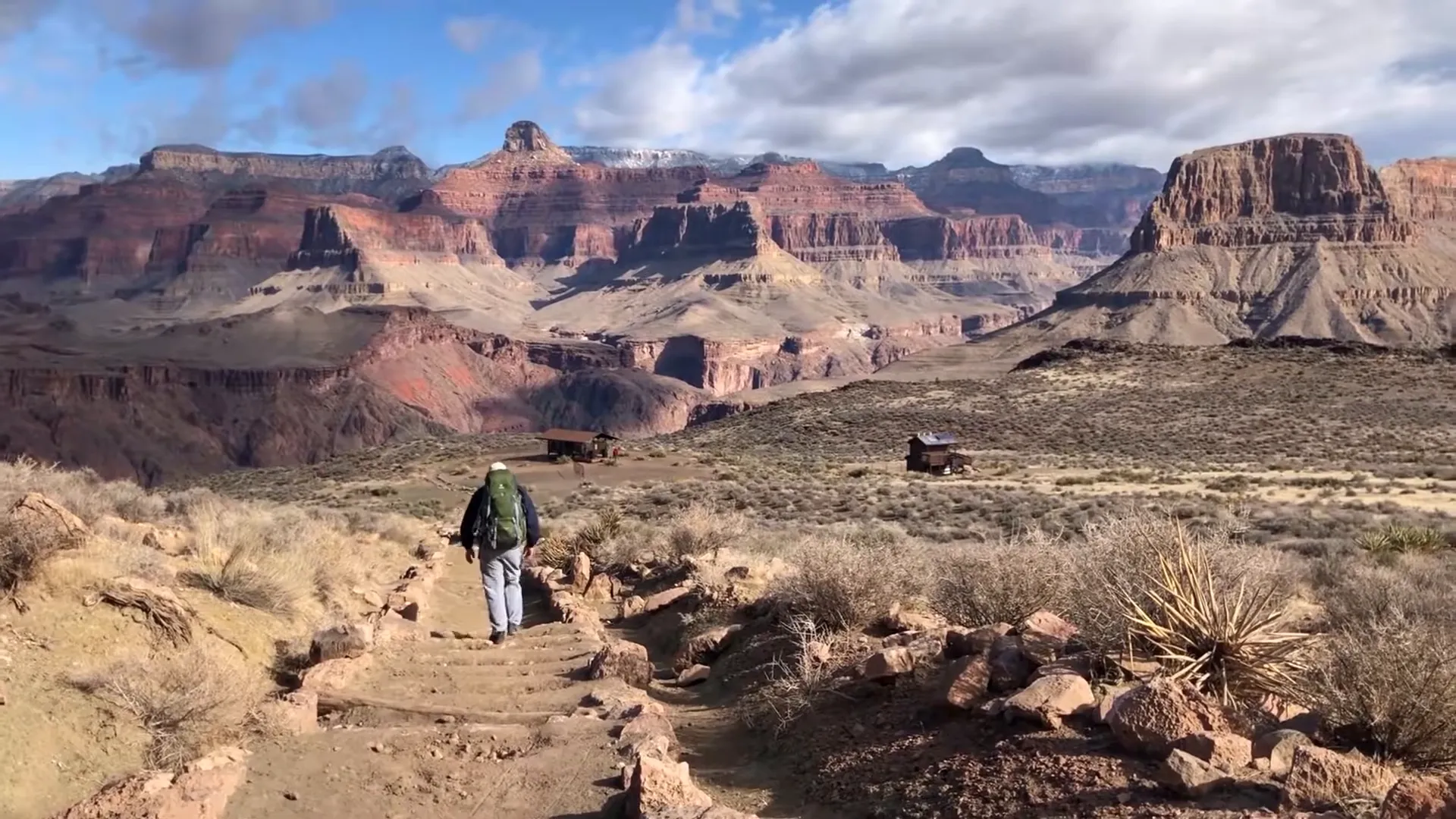
1. Start with the Corridor: Your Gateway Below the Rim
If it’s your first time spending a night below the rim, it’s highly recommended to plan your trip along the Corridor. This trail is the Grand Canyon’s main artery and offers several advantages for beginners. The Corridor features well-maintained trails, year-round water sources, and developed backcountry campgrounds, providing a safer and more manageable introduction to backpacking in the canyon.
The Grand Canyon is massive, remote, and predominantly dry, with extreme temperature swings and elevation changes approaching 5,000 feet. Venturing deep into less traveled areas without prior experience can be dangerous. Hiking the Corridor gives you a taste of the canyon’s challenges while providing reliable resources and emergency support.
Almost all the following tips assume you are hiking within this Corridor area, as it helps you build confidence and skills for future adventures in more remote parts of the canyon.
2. Water Availability: Plan Smart, Drink Safely
One of the most critical aspects of backpacking the Grand Canyon is water management. Fortunately, along the Corridor, water is available year-round at campgrounds and designated spots. This accessibility means you can hike without carrying large amounts of water, which is a significant relief considering the strenuous elevation changes.
However, water availability can vary depending on the season. Some water sources may be turned off during certain times of the year for maintenance or due to drought conditions. It’s essential to check with the backcountry office or campground rangers before your trip to confirm which water points are operational.
Carrying a reliable water filter or purification method is also advisable, as some water sources may require treatment before consumption. Staying hydrated is crucial, especially given the canyon’s dry environment and intense heat during warmer months.
3. Choose the Best Time of Year
Summer in the Grand Canyon can be brutally hot, with temperatures soaring and little shade to provide relief. For a more comfortable and enjoyable backpacking experience, planning your trip in the spring or fall is ideal. These seasons offer milder temperatures, less crowded trails, and a better chance to appreciate the canyon’s beauty without the oppressive heat.
That said, the weather in the Grand Canyon can be unpredictable. Snowstorms can occur as late as April or as early as October, so be prepared for sudden changes. If you encounter snow, crampons are highly recommended for safe travel on icy or slippery surfaces. Steven recommends a specific pair of crampons, linked below, that he personally used and trusts for canyon hikes.
4. Prepare for a Wide Range of Weather Conditions
The Grand Canyon’s weather can be wildly variable, especially during transitional seasons like spring and fall. Steven recounts a trip in mid-March when temperatures ranged from 15 degrees Fahrenheit at night to 70 degrees during the day. Within those few days, the group experienced snow, rain, wind, and heat, all in quick succession.
This variability means that layering is essential. Bring clothing that can be added or removed as conditions change, including waterproof and windproof gear. Also, remember that temperatures at the bottom of the canyon are typically 15 to 20 degrees warmer than at the rim, so plan your clothing and gear accordingly.
5. Pack Light for Maximum Enjoyment
Backpacking the Grand Canyon is physically demanding. Hiking down nearly 5,000 feet of elevation and then back up can be brutal on your joints and feet, especially with a heavy pack. Packing light is not just convenient—it’s essential for safety and comfort.
Consider bringing only one set of clothes, paring down your gear to the essentials, and taking advantage of water availability along the trail to avoid carrying excess weight. The National Park Service even recommends ditching the tent and sleeping bag during summer hikes to reduce pack weight, relying instead on emergency shelters or bivvy sacks.
Planning well and researching what you truly need will help you create a minimalist pack that enables you to enjoy the hike rather than endure it.
6. Train for Both Downhill and Uphill Hiking
Many hikers underestimate how tough descending the canyon can be. The trip down is hard on the calves and can leave you sore and hobbling for days. Steven notes that almost everyone he saw at the bottom was limping, and one of the first questions from park rangers was about leg condition.
Training your muscles for both downhill and uphill hiking is crucial. Incorporate exercises that strengthen your calves, quads, and knees, and practice hiking downhill to prepare your body for the strain. This preparation will help you maintain endurance and reduce injury risk during your trip.
7. Don’t Give Up on Permits
Backcountry permits are required for overnight stays below the rim, and they can be competitive to obtain. If your initial permit application is denied, don’t lose hope. You can try for walk-up permits or add your name to the waitlist. Permits often become available last minute due to cancellations or no-shows.
For more detailed advice on securing last-minute permits, Steven offers a dedicated guide that can increase your chances of getting out on the trail.
8. Beware of the Squirrels
The Grand Canyon’s squirrels are notorious for their speed, fearlessness, and determination. They will chew holes in your pack or tent to get to food, and they have even learned to associate the smell of empty Ziploc bags with food, chewing holes just to investigate.
Use the provided food storage boxes at campsites and never leave food or food-scented items unattended. Guard your pack whenever you leave your campsite to avoid unwelcome visitors and potential damage to your gear.
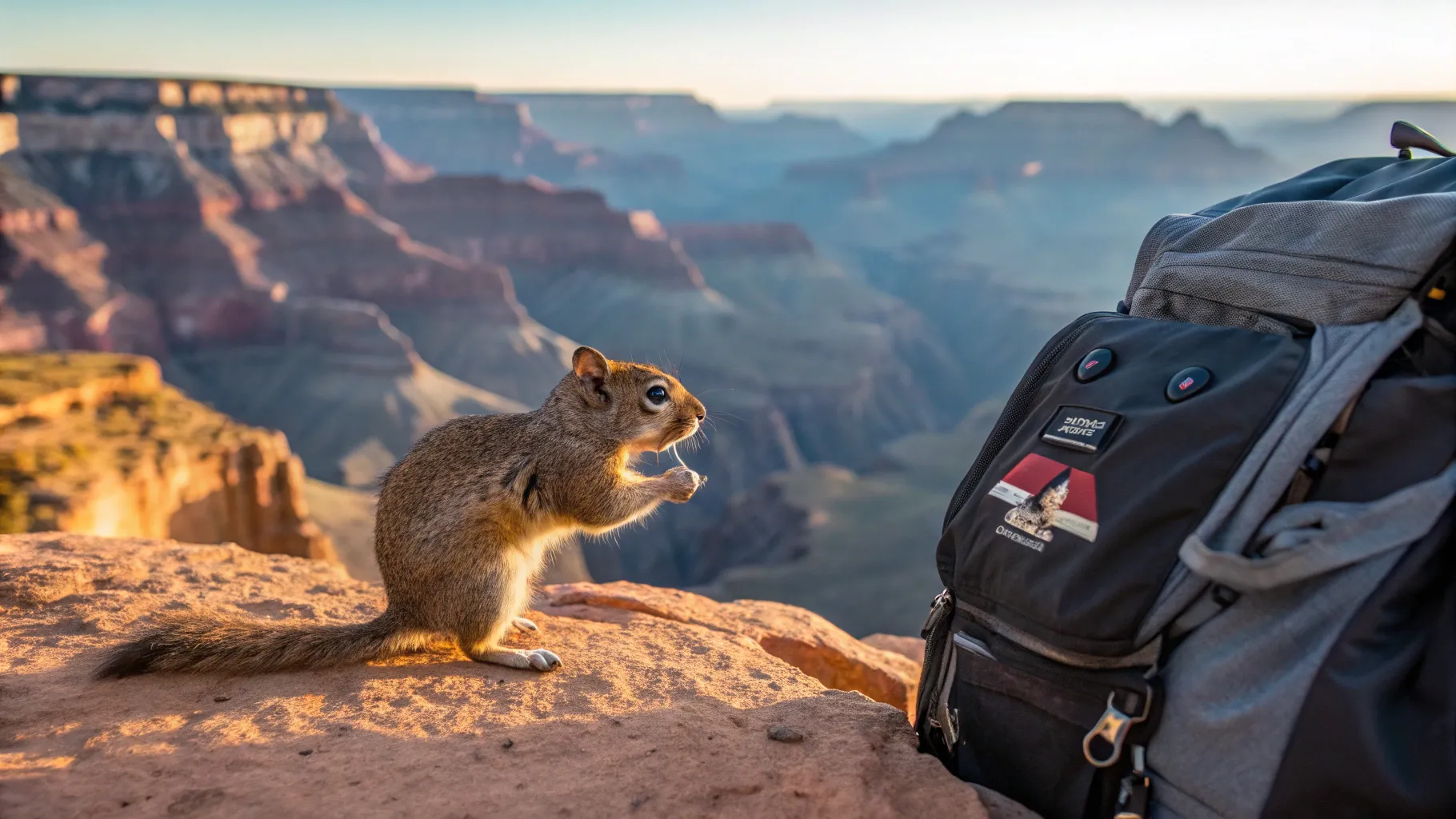
Bonus Tips for a Better Backpacking Experience
Bonus Tip 1: Tent Stakes and Wind
The ground in the canyon is hard and rocky, and the area can be quite windy. Tent stakes may not hold well in the soil, so be prepared. Either bring sturdy replacement stakes or use rocks to secure your tent from blowing away. Investing in high-quality tent stakes before your trip can save you frustration.
Bonus Tip 2: Campsite Recommendation at Bright Angel
If camping at Bright Angel campground, try to reserve site number 23. Park rangers agree it’s the best site because it’s close to bathrooms and offers privacy with no neighbors on either side. This small detail can make a big difference in your camping comfort and overall experience.
Bonus Tip 3: Toilets Along the Trail
There are toilets located all along the Corridor trail, so you can save weight by leaving toilet paper at home, unless you plan to explore side hikes where facilities might not be available. This is a simple way to lighten your pack without sacrificing comfort.
Bonus Tip 4: Worthwhile Side Hikes
Side hikes to Ribbon Falls and Plateau Point are highly recommended. These detours offer spectacular views and unique canyon features that enhance your trip. Planning for these hikes adds variety and memorable highlights to your backpacking itinerary.
Bonus Tip 5: Use a Red Light Headlamp
The night skies in the Grand Canyon are breathtaking, with some of the clearest star views possible. To preserve your night vision and respect others in the campground, use a headlamp or flashlight with a red filter. The park has signs posted encouraging this practice, and it helps maintain the magical nighttime ambiance.
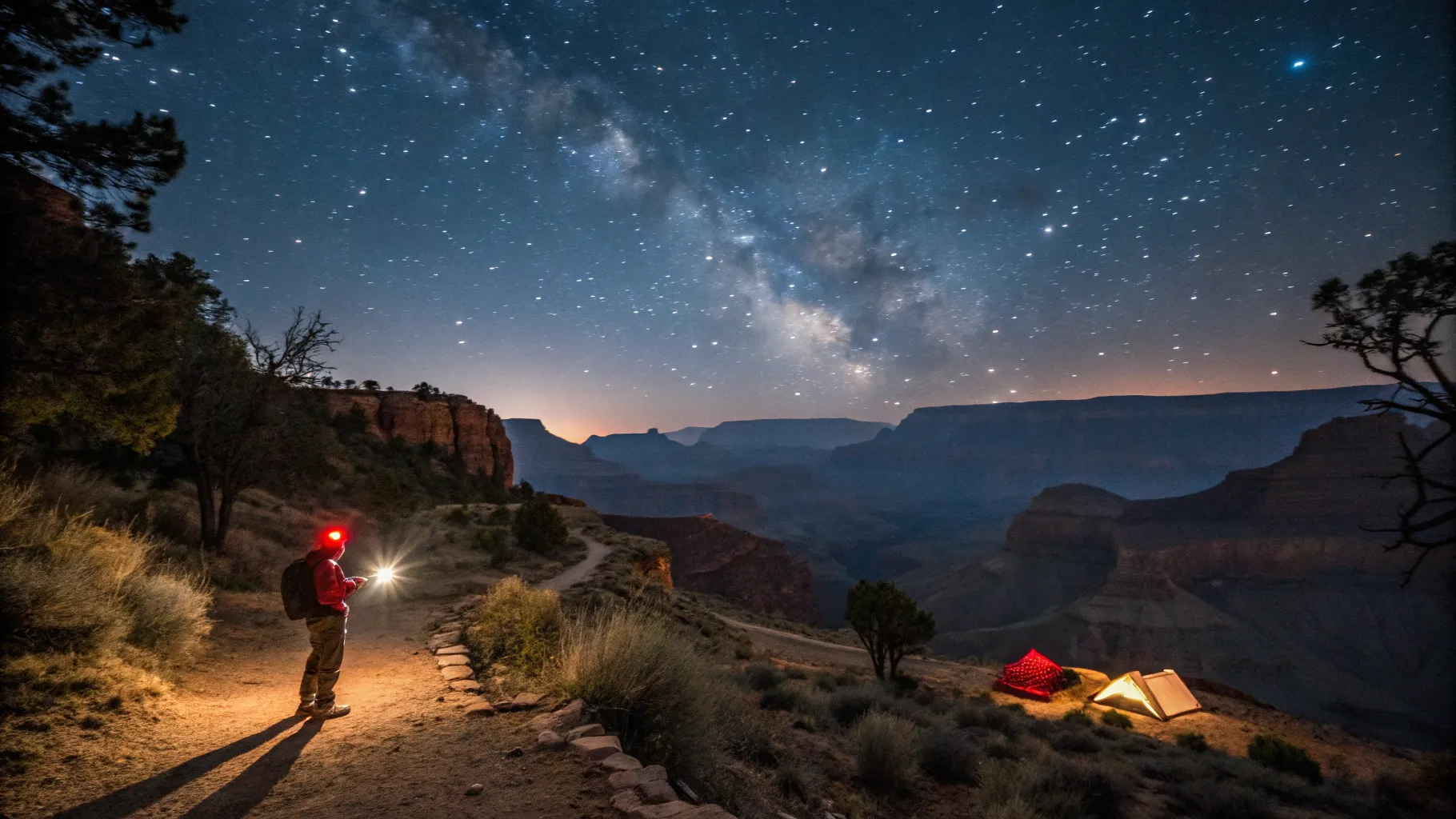
Final Thoughts
Backpacking the Grand Canyon is an incredible adventure that requires preparation, respect for the environment, and smart planning. By following these eight essential tips and bonus advice, hikers can navigate the canyon safely, enjoy its stunning landscapes, and come away with unforgettable memories.
For those looking to explore more of the Southwest’s natural beauty, Southern Utah offers exceptional vacation rental options that serve as perfect bases for your adventures. Consider staying near Zion National Park, Bryce Canyon, or even the Grand Canyon itself to immerse yourself fully in the region’s stunning landscapes.
Explore comfortable and luxurious vacation rentals at Stay Copper Rock that provide easy access to these iconic parks and offer amenities that enhance your outdoor experience. For more outdoor travel inspiration, check out guides on top hidden hikes in Southern Utah and tips for visiting Zion National Park, both great complements to your Grand Canyon adventure.
Frequently Asked Questions (FAQ)
Q: Do I need a permit to backpack in the Grand Canyon?
A: Yes, overnight backpacking below the rim requires a backcountry permit. These permits are competitive, so apply early and consider walk-up permits or waitlists if initially denied.
Q: When is the best time to backpack the Grand Canyon?
A: Spring and fall are ideal due to milder temperatures and fewer crowds. Summer can be very hot, and winter may bring snow and ice, requiring additional gear like crampons.
Q: How much water should I carry?
A: Water is available year-round along the Corridor, so you don’t need to carry large amounts. Always verify water source availability before your trip and bring a purification method.
Q: What should I pack for a Grand Canyon backpacking trip?
A: Pack light, bring layers for varying weather, and consider ditching bulky items like tents in summer. Essentials include water treatment, sturdy footwear, sun protection, and a red light headlamp for night.
Q: Are there any wildlife concerns?
A: Yes, squirrels are known to chew through packs and tents to get food. Use provided food storage boxes and never leave food unattended.
Q: Can I hike side trails during my backpacking trip?
A: Absolutely! Side hikes to Ribbon Falls and Plateau Point are highly recommended for added scenic value and unique experiences.

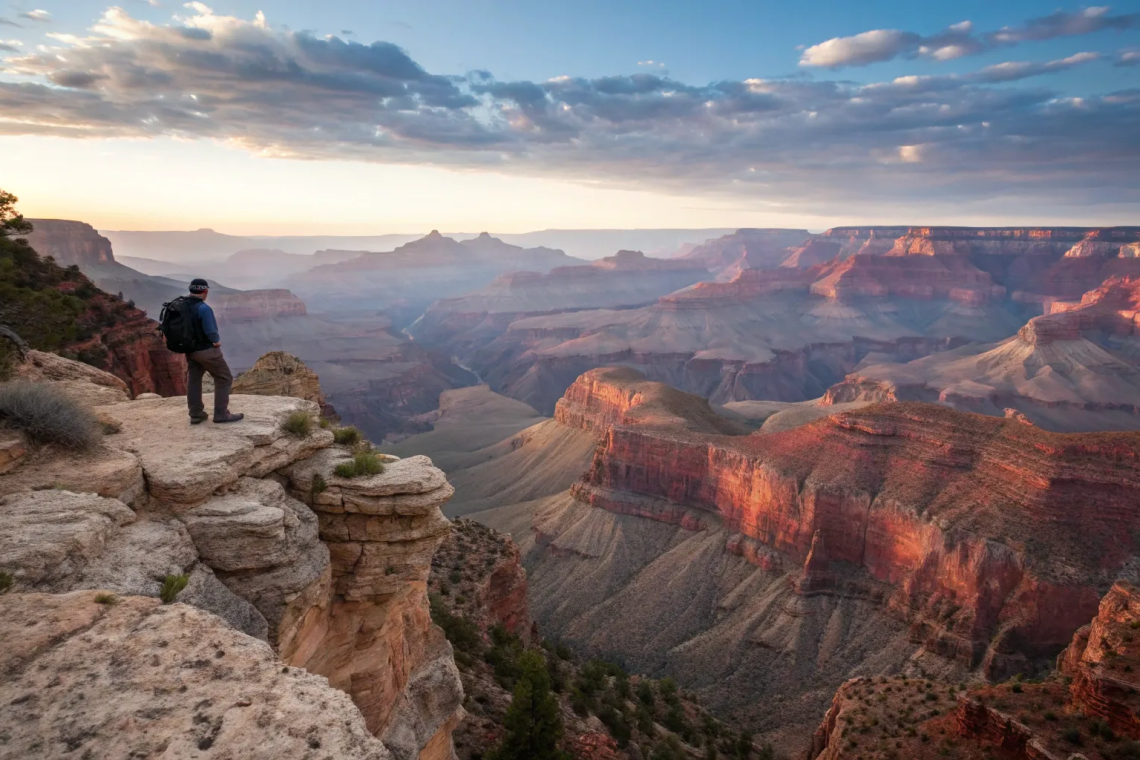



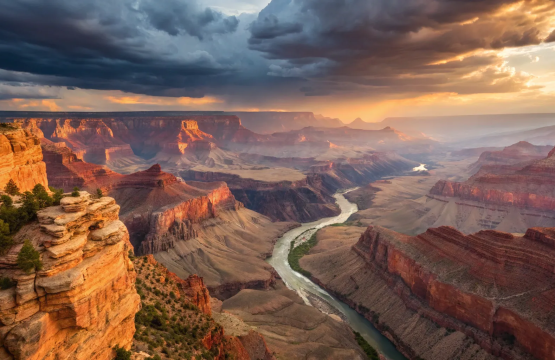
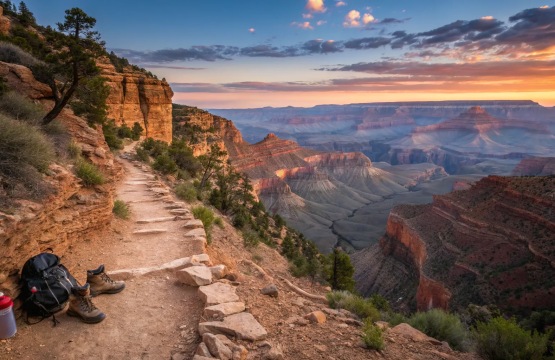
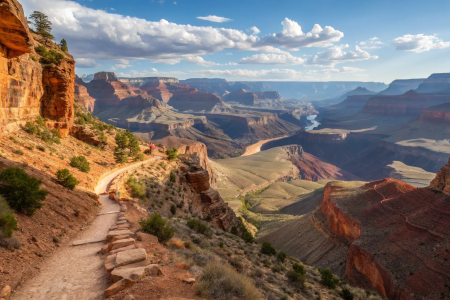
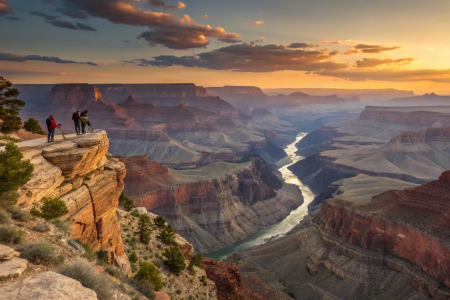
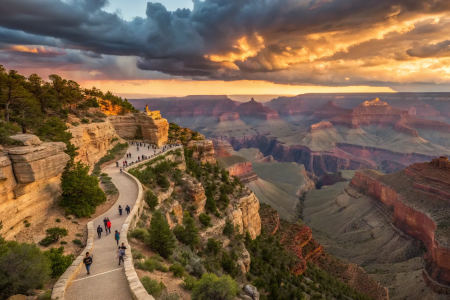

Join The Discussion